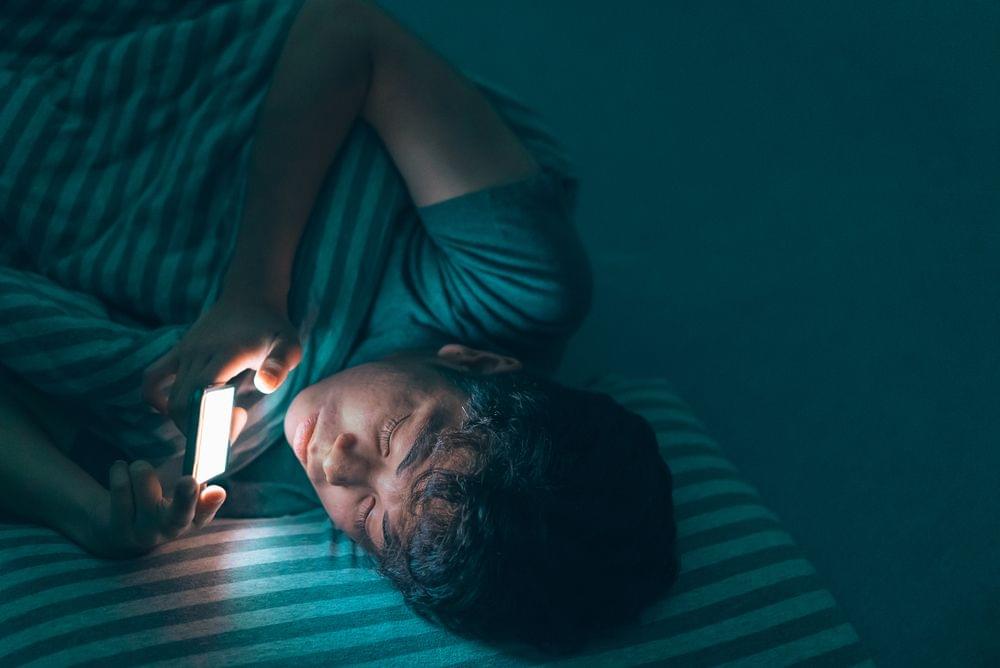

As if we needed another thing to be afraid of, here comes nomophobia. Seriously, it’s a thing. Nomophobia is the fear of being without your cell phone. And while the play on words (nomo is short for ‘no mobile’) is pretty funny, it’s no laughing matter.
Teens can’t stop using their cell phones. And while the cell phone is an integral part of how they learn, interact, and play, it’s important to know the signs of smartphone addiction and, just as important, how to break phone addiction in your teens.
Table Of Contents
Smartphone Addiction Statistics That’ll Make You Look Twice
- American teens spend 9 hours a day with digital technology
- Kids aged 8 to 12 spend 6 hours with media (on top of using their device for schoolwork)
- On average, kids spend more time-consuming media than they do with their parents or learning in school
Bottom line? Cell phone addiction facts are real. And it’s so concerning that it prompted two major Apple investors, Jana Partners and the California State Teacher’s Retirement System, to issue a warning and ask the company to address the problem back in 2018.
There is a developing consensus around the world including Silicon Valley that the potential long-term consequences of new technologies need to be factored in at the outset, and no company can outsource that responsibility. Apple can play a defining role in signaling to the industry that paying special attention to the health and development of the next generation is both good business and the right thing to do.
Apple responded by introducing Screen Time, a tool that helps users understand how much time they spend on their devices. But while the built-in app is useful and a real eye-opener, it isn’t enough to stop rising smartphone addiction statistics.
Teenage Cell Phone Addiction Symptoms to Watch Out For
- They’re constantly looking to plug in. Did your cell phone charger suddenly go missing? Check with your kid. A constantly drained battery is a sign of teenage cell phone addiction, and so is desperately looking for a charging cable.
- They check their phone for messages, even when there’s no notification. You’ve probably felt those phantom cell phone vibrations yourself. You know what we’re talking about. You think your cell phone is vibrating even though it clearly isn’t. That’s perfectly normal, but constantly checking your phone for messages without being prompted by a notification or ring is one of many teenage cell phone addiction symptoms you should watch out for.

- They use their phone while driving. Many states have laws on the books that ban you from using a cell phone while driving. At the time of publication, 25 states prohibit drivers from using a handheld cell phone, and 48 states ban text messaging while behind the wheel. But regardless of how stringent the law might be, some teens flout the rules, choosing to use their phone while driving. This is not only dangerous, but it’s also a sign of teen cell phone addiction.
- They use their phone while walking or crossing the street. There might not be any laws on the books that tackle the dangers of texting while walking, but that doesn’t mean it’s not dangerous. Staring down at a phone while crossing the street is a sign of mobile phone addiction.
- They’re not sleeping as much. It’s normal for teenagers to wake up exhausted, even after a good night’s sleep. But if there’s a sudden change in sleep habits, mobile phone addiction could be at play. While tiredness is one of the big teenage cell phone addiction symptoms you should pay attention to, it could also be an indicator of cyberbullying, stress, or a number of other factors.
How to Stop Phone Addiction in Teens
Get rid of apps that take up too much time
It’s not necessarily the phone they’re addicted to. It’s the content. By eliminating the apps they use most, you’ll make their cell phone less attractive.
Turn of notifications
It might seem like a pretty basic thing to do, but it can be extremely effective. Notifications act as a trigger, prompting your teen to check their messages or email. The sound alone lets them know that there’s something important waiting for them (even if it’s not important at all).
By turning off notifications, you can give your kids a little breathing space from their phones.
Give them real-world hobbies to turn to
Helping them overcome their cell phone addiction could be as simple as introducing them to real hobbies. Replace screen time with family time. A game of basketball. Or maybe some poker. Bonding time will give them new perspectives on what’s important.
How a Parental Control App Can Aid in Cell Phone Addiction Treatment

Many parents are turning to parental control apps like mSpy to help get a handle on their kids’ phone use. Here’s why you might want to consider using it as part of your cell phone addiction treatment plan.
- Know what apps they’re using the most. We hear you loud and clear. You have a sneaking suspicion that they’re using a few specific apps, but you don’t know which ones. Still, you’re concerned that they might be spending too much time on their apps and you want to know how to break phone addiction. Start by finding out which apps they’re using the most. Just install mSpy and you’ll know.
- Block applications. Some teenage cell phone addiction is fueled by apps. The fact of the matter is that some apps are just incredibly addictive, especially social media apps like Facebook or TikTok. If you know your child is using an app way too often, you can stop that.
- Restrict websites. If your child is addicted to a certain website, you can use mSpy to block access. And you can do it completely remotely without accessing their phone.
Teen Cell Phone Addiction Is Only Going to Get Worse, but There’s Hope
Smartphone addiction statistics are already staggering. And as big tech releases new phone innovations, it’s only going to cause an uptick in mobile phone addiction. By being aware of what’s going on in your kids’ digital world, you can help stop mobile phone addiction or, at the very least, identify it before it gets worse.



